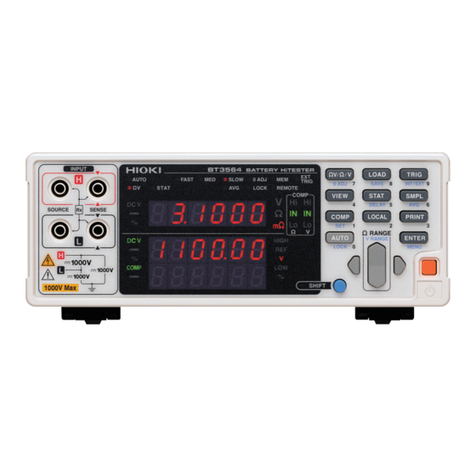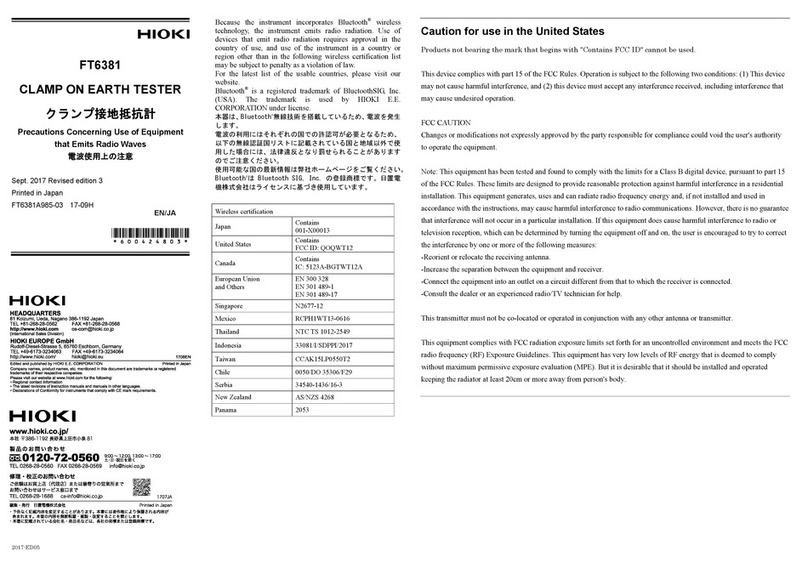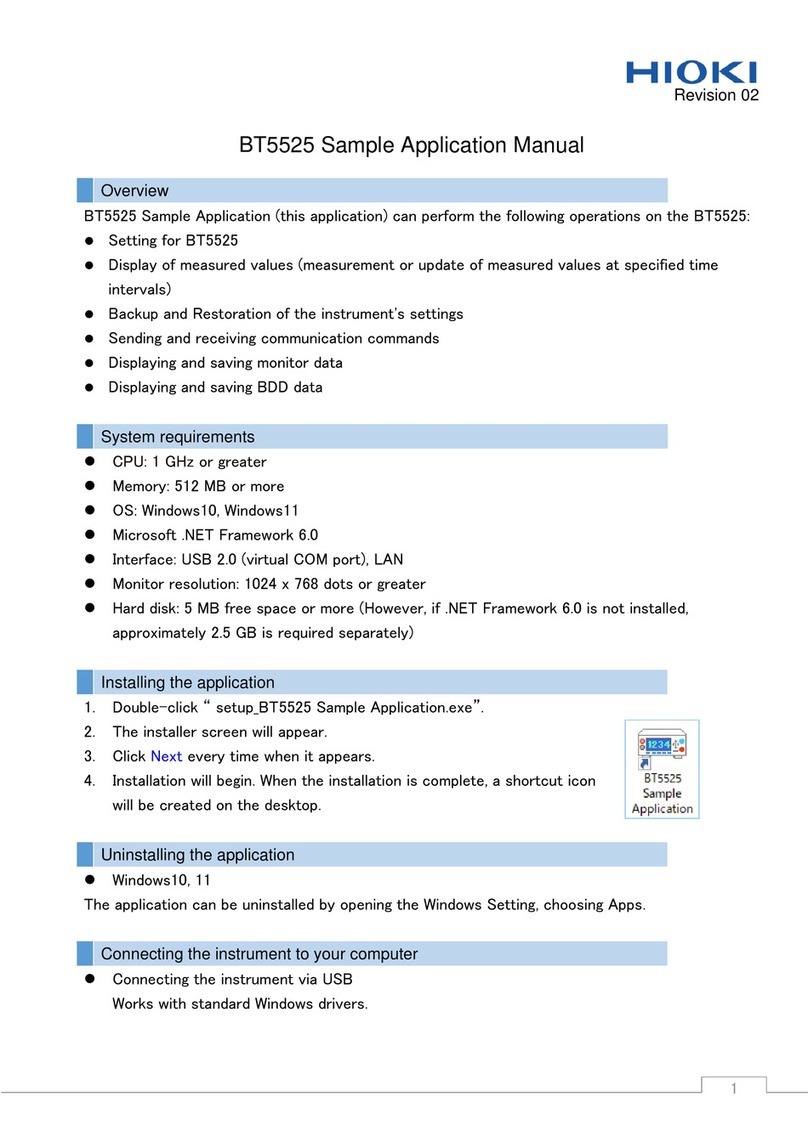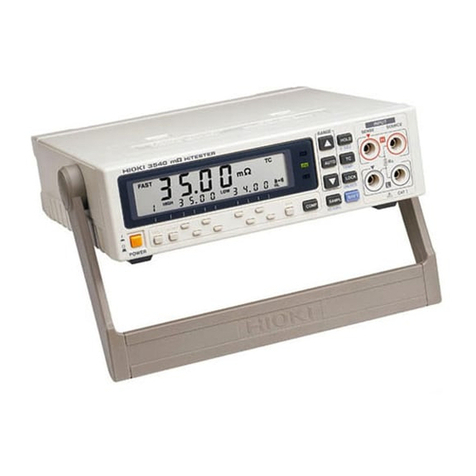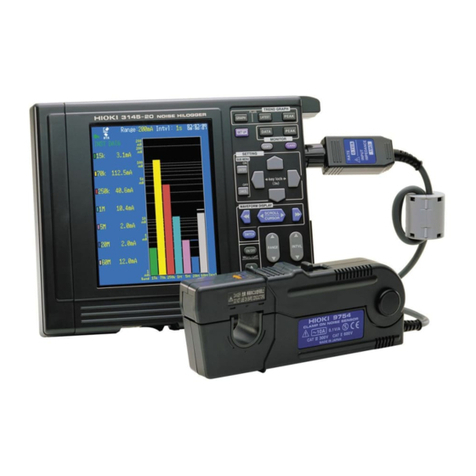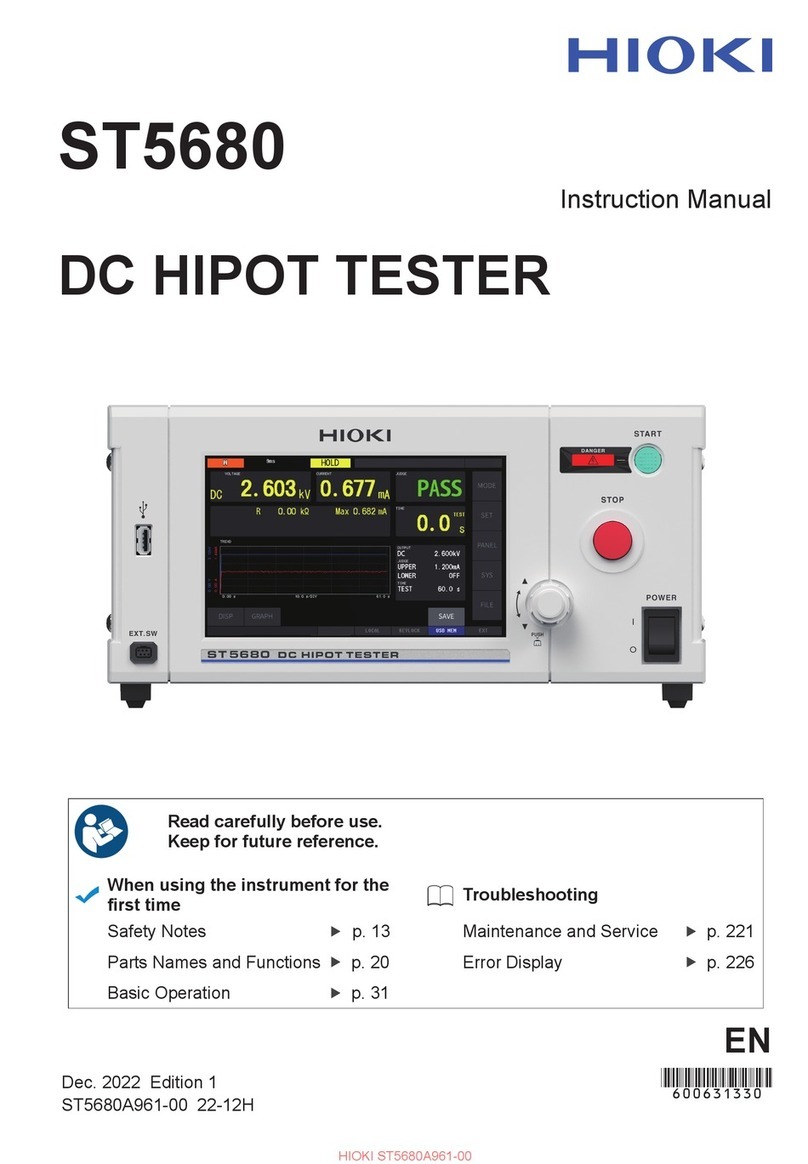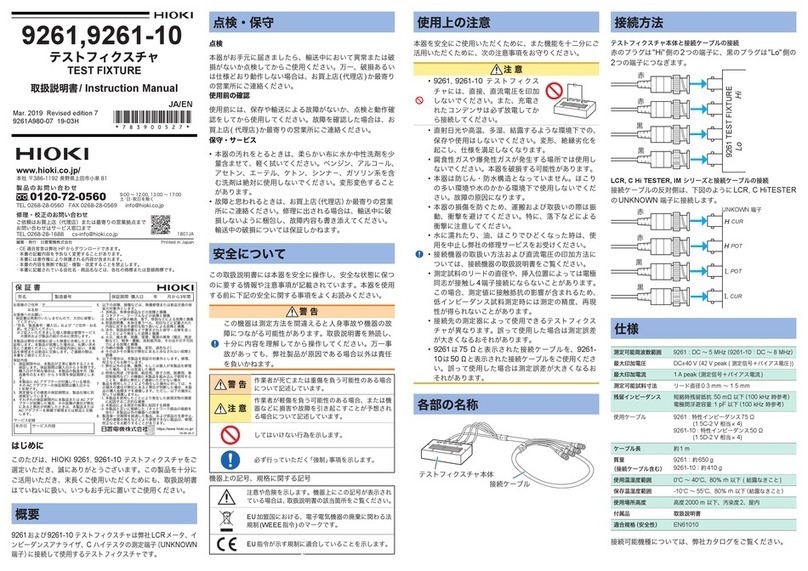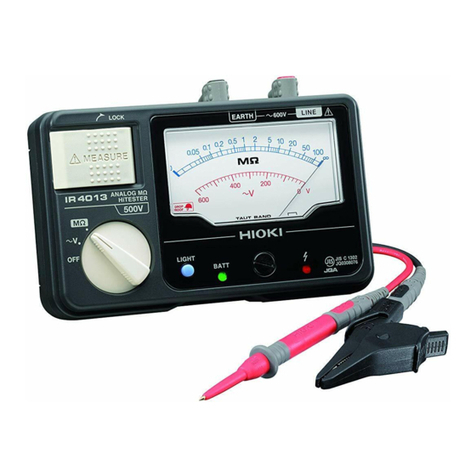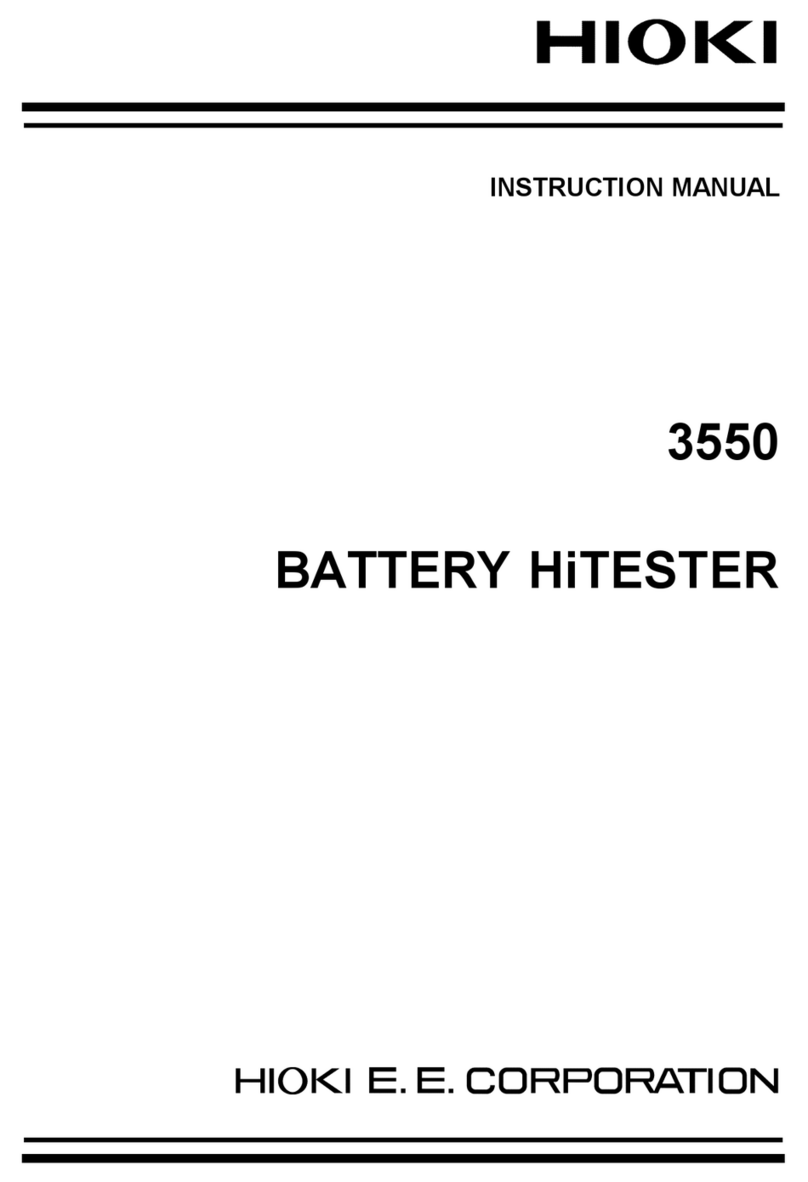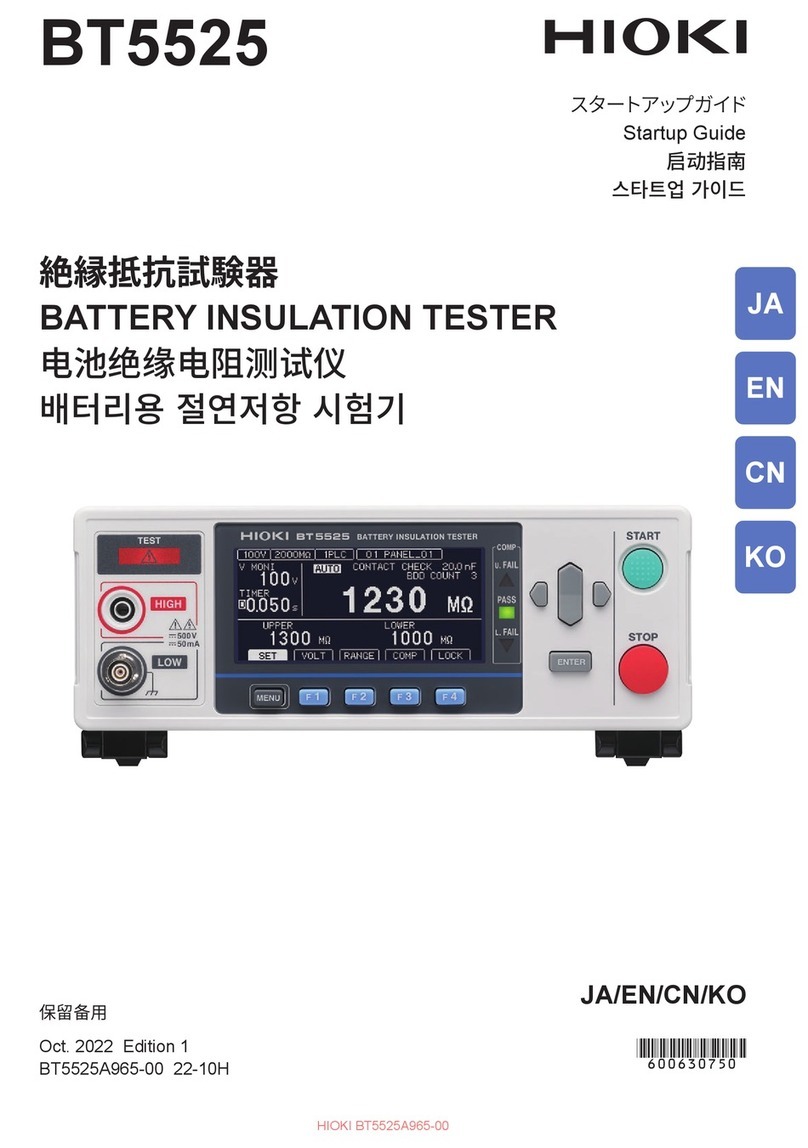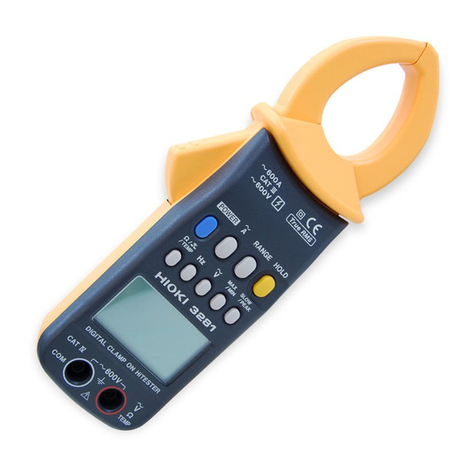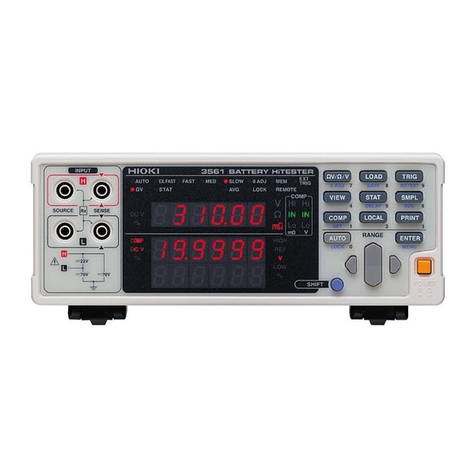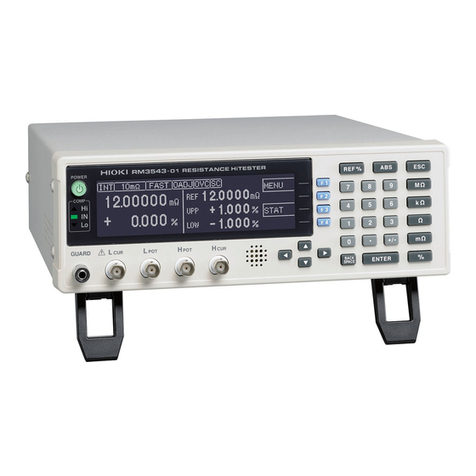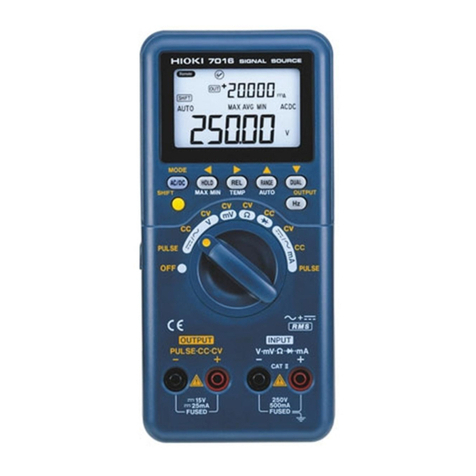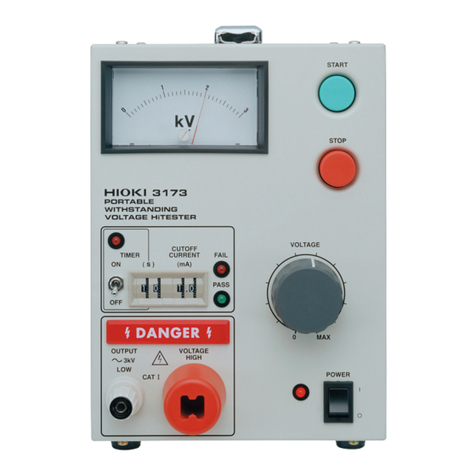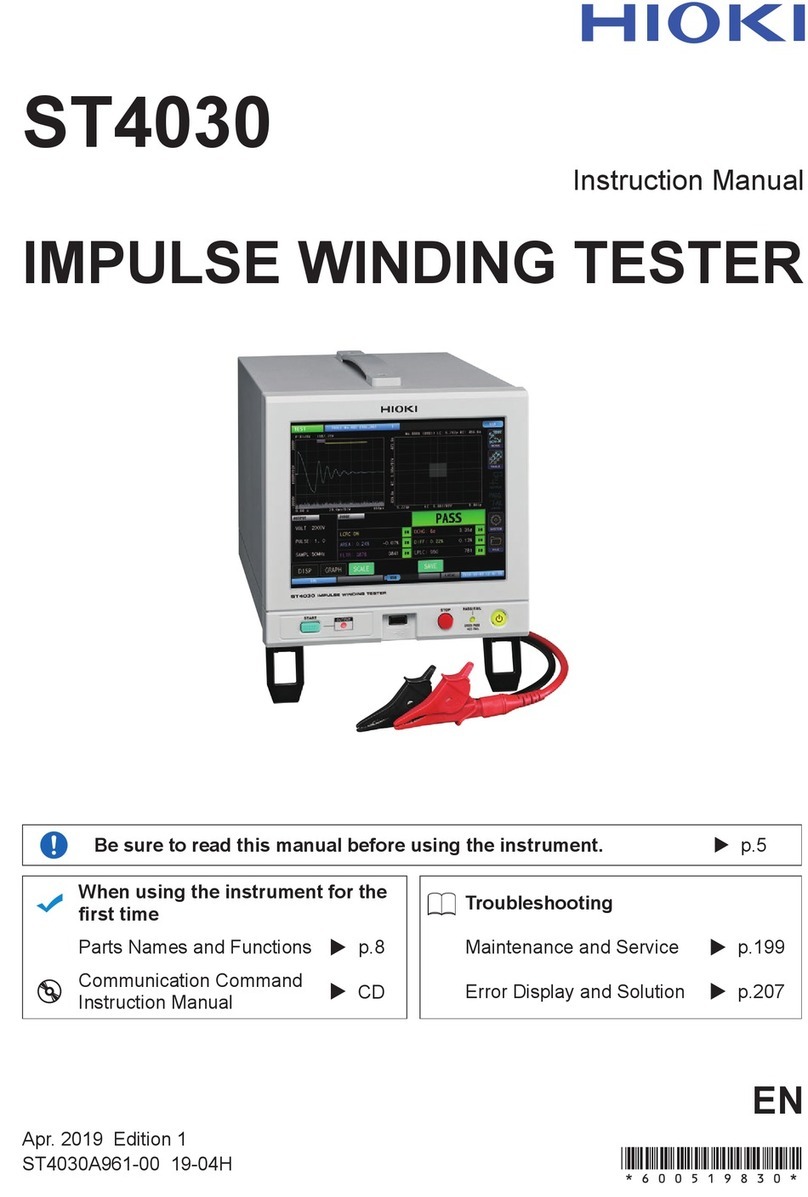
ii
3 Measurement 59
3.1 Pre-Operation Inspection .....................59
3.2 Measuring Insulation Resistance .........62
3.2.1 Starting Measurement......................... 64
3.2.2 Ending Measurement.......................... 70
3.2.3 Checking and Deleting Held Data....... 72
3.2.4 Automatic Discharge Function ............ 73
3.2.5 Switching to Leakage Current Indication
.............................................................74
3.2.6 Insulation Resistance Measurement
Basis ....................................................75
3.2.7 Use of GUARD Terminal..................... 77
3.3 Measuring Voltage ...............................79
3.4 Measuring Temperature .......................82
3.4.1 Measurement Procedure .................... 82
4 Advanced Measurement 85
4.1 Using Timer ..........................................85
4.1.1 Setting Timer/Conducting Insulation
Resistance Measurement ....................85
4.2 Displaying PI and DAR .........................89
4.3 Temperature Compensation (TC) ........93
4.3.1 Performing Temperature Compensation
.............................................................93
4.3.2 Exiting Temperature Compensation
Mode ....................................................96
4.4 Step Voltage Test .................................97
4.4.1 Setting and Conducting a Step Voltage
Test ......................................................98
4.4.2 Viewing Detailed Data of Each Step after
Step Voltage Test ..............................101
4.4.3 Exiting Step Voltage Test Mode........ 103
